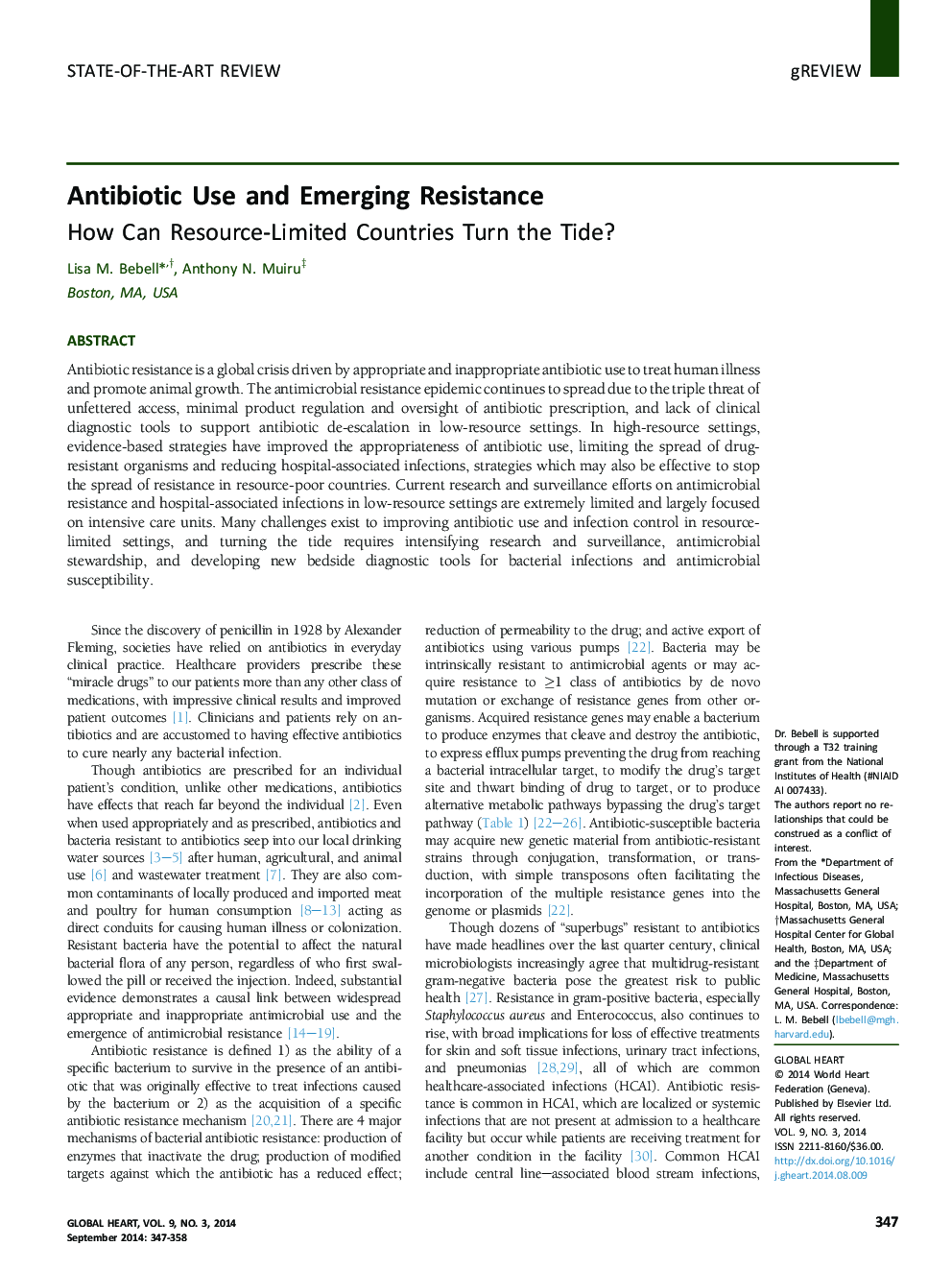| Article ID | Journal | Published Year | Pages | File Type |
|---|---|---|---|---|
| 2916440 | Global Heart | 2014 | 12 Pages |
•Antibiotic resistance is a global crisis driven by appropriate and inappropriate antibiotic use.•Resistance is driven by unfettered access and lack of product regulation and clinical diagnostic tools.•Research and surveillance in low-resource settings is extremely limited and should be intensified.•Antimicrobial stewardship and new bedside diagnostic tools are also needed to turn the tide.
Antibiotic resistance is a global crisis driven by appropriate and inappropriate antibiotic use to treat human illness and promote animal growth. The antimicrobial resistance epidemic continues to spread due to the triple threat of unfettered access, minimal product regulation and oversight of antibiotic prescription, and lack of clinical diagnostic tools to support antibiotic de-escalation in low-resource settings. In high-resource settings, evidence-based strategies have improved the appropriateness of antibiotic use, limiting the spread of drug-resistant organisms and reducing hospital-associated infections, strategies which may also be effective to stop the spread of resistance in resource-poor countries. Current research and surveillance efforts on antimicrobial resistance and hospital-associated infections in low-resource settings are extremely limited and largely focused on intensive care units. Many challenges exist to improving antibiotic use and infection control in resource-limited settings, and turning the tide requires intensifying research and surveillance, antimicrobial stewardship, and developing new bedside diagnostic tools for bacterial infections and antimicrobial susceptibility.
